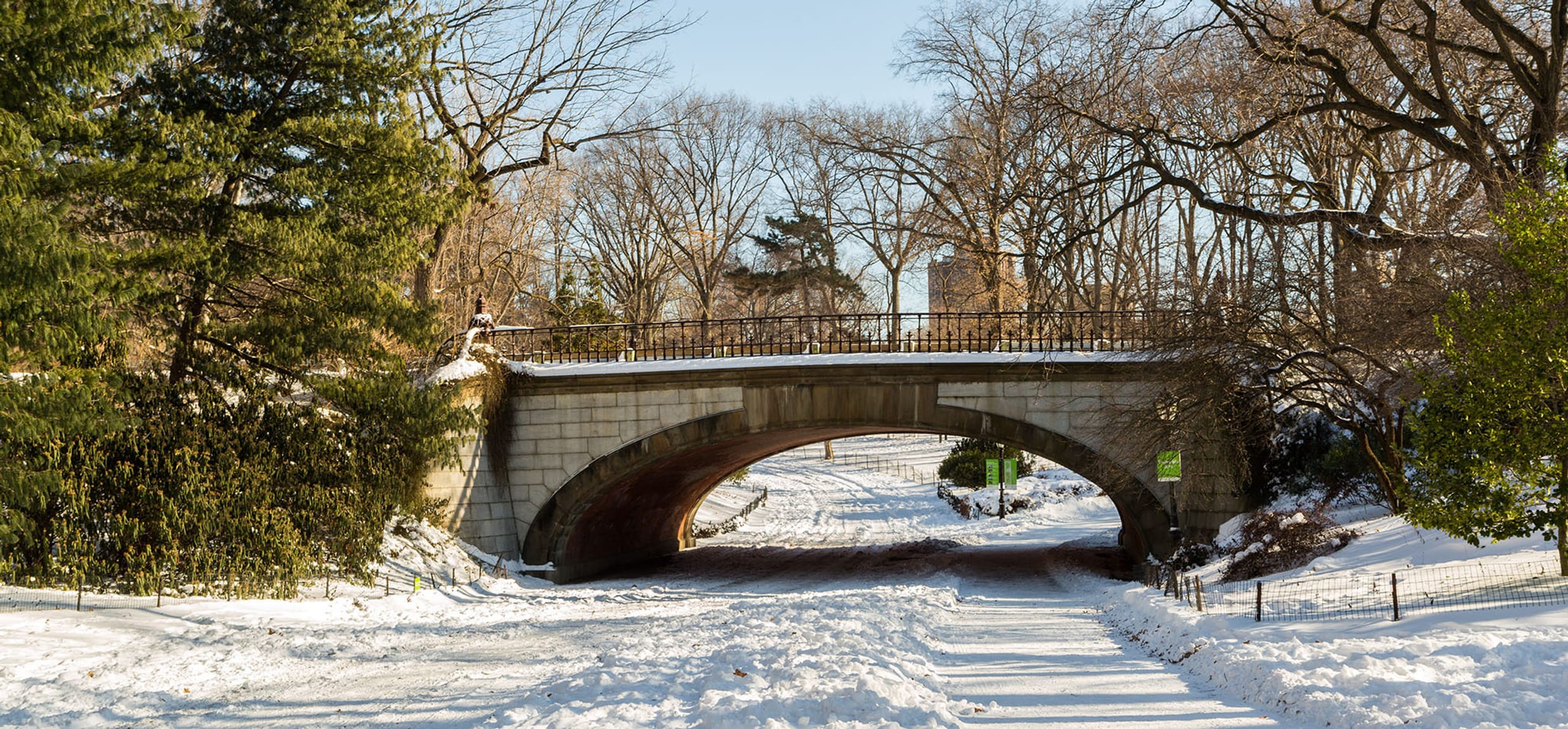Winterdale Arch

This graceful arch, which has the largest span of Central Park’s stone arches, carries the West Drive over the bridle path.
Its name references its location, once an area designed for scenic beauty in winter and featuring many evergreen trees.
Winterdale Arch was originally part of the “Winter Drive,” a section of the West Drive stretching from 72nd Street to 102nd Street whose edges were planted with pine trees and other conifers for visitors to enjoy in the winter from their horse-drawn carriages or sleighs. Most of these trees were lost by the end of the 19th century, but in the 1970s, the philanthropist Arthur Ross returned pine trees to the area, funding the planting of the Arthur Ross Pinetum just to the north. Additional evergreen plantings by the Central Park Conservancy have also returned the look and feel of the “Winter Drive” to this area of the Park.
Central Park’s arches and bridges are an integral part of its circulation system. The Park’s designers, Frederick Law Olmsted and Calvert Vaux, created an intricate system of pedestrian paths, a bridle path, and carriage drives to allow visitors to experience the Park’s landscapes in a variety of ways. However, for this system to work safely and in a relatively small space, it had to limit interactions between potentially conflicting forms of traffic. The Park’s arches and bridges separate this traffic by carrying one form of transportation over another.
Between 1859 and 1866, 27 arches and bridges were built in Central Park. All were designed by Vaux—in some cases with the assistance of fellow architect Jacob Wrey Mould. Each one is unique, designed with various materials and decorative motifs and with careful consideration of its placement in the landscape. Over time, six arches and bridges were added and three were removed, bringing the total to 30 ornamental bridges and arches in the Park today. There are also additional bridges in the Park’s woodlands that are smaller, constructed with wood, and typically cross over streams.
Another key part of this circulation system are the transverse roads that allow City traffic to cross the Park. The transverse roads are sunken below the grade of the Park with bridges crossing over them. These bridges were designed as more utilitarian structures and weren’t intended to be seen—but they allow pedestrians and other traffic to seamlessly move through the Park. There are 13 transverse road bridges (one of which, Denesmouth, is also considered an ornamental bridge).

Give Back to the Park
Arches and bridges support every visitor’s journey through Central Park. You can help the Conservancy maintain these integral structures and the landscapes that surround them.


